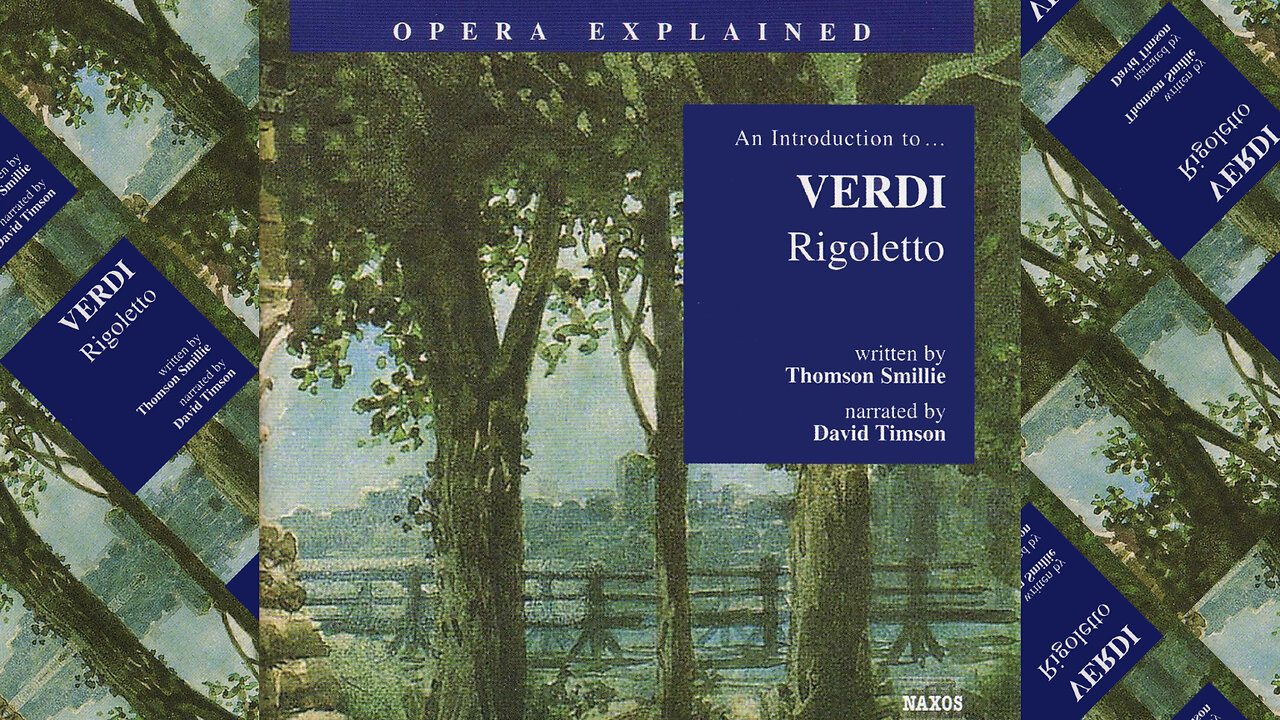Premium Only Content

Opera Explained | Rigoletto by Giuseppe Verdi (Audio)
Written by Thomson Smillie, narrated by David Timson.
Rigoletto is simply wonderful entertainment. It is uncanny to listen to the opening ten minutes or so and recognise a dozen superb tunes. It is also much more – a daring (for its time) attack on aristocratic privilege, a tender love story, and an impassioned appeal on behalf of the disadvantaged, all set to music of such wealth and beauty that, with its sister operas La traviata and Il trovatore, it has almost defined Italian opera for 150 years.
Of the unholy trinity of Rigoletto, Il Trovatore and La Traviata, which represents a pinnacle of Italian opera as a popular art form, Rigoletto is in many ways the most approachable and enjoyable. It may not be as prodigally melodious as Il Trovatore (though it does contain the greatest pop song in history!), nor as deeply touching as La Traviata, but it more than compensates with a seamlessly effective story containing a galaxy of memorable stage characters and enough superb tunes to satisfy an army of barrel organists.
Rigoletto received its premiere on 11 March 1851 in Venice. It was a smash hit, and is one of a handful of operas which have never been out of the repertoire since its triumphant premiere. And no wonder. It has every possible ingredient of success. The setting is the glittering and corrupt court of Renaissance Mantua. The so-called hero is the glamorous young duke, whose politically incorrect views on women also supply the best tunes. His would-be nemesis is Rigoletto, a multi-faceted figure: jester, cynic, foul-mouthed butt of everybody’s basest instincts, yet possessed of nobler feelings. His daughter Gilda virtually incarnates the pure unspoiled virgin of Italian operatic legend, and the role, with its exquisite flights of coloratura fancy, exploits that elegant vocal style we call ‘bel canto’.
Verdi handled an opera chorus better than any composer before or since, and by the time he wrote Rigoletto, was also an orchestral colourist of the first quality. From the darkly sinister opening statement of the Curse – La Maledizione is the subtitle of the opera – through a dazzling series of arias and ensembles including opera’s most famous quartet, the opera shows Italy’s greatest master at the peak of his incredible powers.
Track list:
1. Introduction
2. Rigoletto and the censors
3. Verdi’s career – the long view
4. Act I – Prelude
5. Monterone’s curse
6. Rigoletto and Sparafucile
7. Rigoletto’s love for his daughter – Gilda’s entrance
8. The Duke and Gilda
9. Gilda’s aria ‘caro nome’ – Gilda’s abduction
10. Act II
11. Rigoletto’s grief
12. Gilda’s love – Rigoletto’s call for revenge
13. Act III
14. Quartet – the Duke, Maddalena, Gilda, Rigoletto
15. ‘Ah, la maledizione!’ – ‘The curse!’
Interpreters:
Eduard Tumagian
Alida Ferrarini
Yordy Ramiro
Slovak Philharmonic Chorus
Slovak Radio Symphony Orchestra
Conducted by Alexander Rahbari
Next: La Traviata by Giuseppe Verdi
https://rumble.com/v5qqlse-opera-explained-la-traviata-by-giuseppe-verdi-audio.html
-
 2:24:08
2:24:08
WeAreChange
14 hours agoElon Musk & Donald Trump: The Emergency Halt That Saved Us
94.9K63 -
 1:13:11
1:13:11
Flyover Conservatives
1 day agoWARNING! Is Bitcoin CIA-Controlled? – The Shocking Reality of Digital Assets - Clay Clark | FOC Show
45.3K11 -
 2:00:37
2:00:37
Space Ice
17 hours agoSpace Ice & Redeye Try To Figure Out Seagal's Most Incoherent Movie
169K7 -
 1:00:36
1:00:36
PMG
1 day ago $15.50 earned"Santa Trump is Giving Us Hope - But Will Johnson Stand Strong?"
122K17 -
 54:30
54:30
LFA TV
1 day agoThe German Strongman’s Arrival Is Imminent | Trumpet Daily 12.18.24 7PM EST
89.3K8 -
 2:04:11
2:04:11
Melonie Mac
15 hours agoGo Boom Live Ep 32! Soul Reaver Remastered!
73.7K11 -
 39:11
39:11
Sarah Westall
13 hours agoDigital Slavery and Playing with Fire: Money, Banking, and the Federal Reserve w/ Tom DiLorenzo
89.3K8 -
 1:38:38
1:38:38
2 MIKES LIVE
17 hours ago2 MIKES LIVE #157 ILLEGALS, PROTESTORS AND DRONES!
56.1K2 -
 1:01:03
1:01:03
LFA TV
1 day agoTHE LATEST SPENDING BILL IS AN ABOMINATION! | UNGOVERNED 12.18.24 5pm EST
56K56 -
 1:43:34
1:43:34
Redacted News
16 hours agoBREAKING! WARMONGERS PUSHING TRUMP TO LAUNCH PRE-EMPTIVE WAR WITH IRAN | Redacted News
172K296